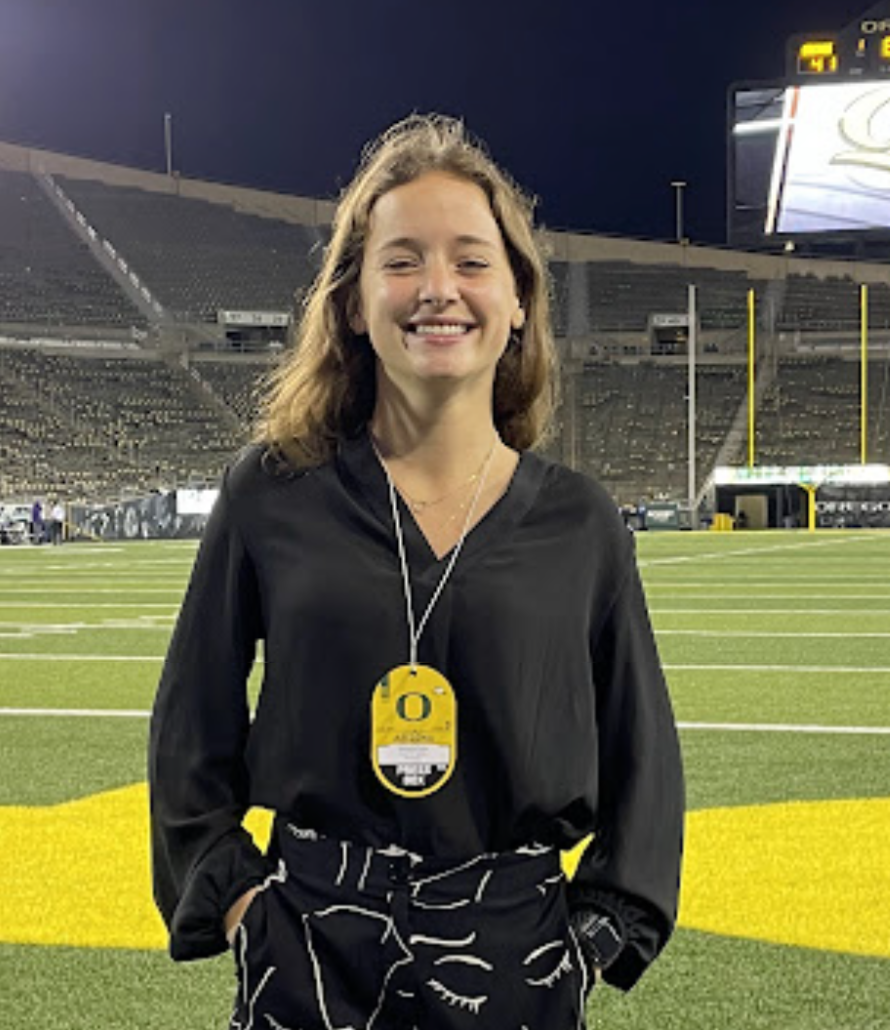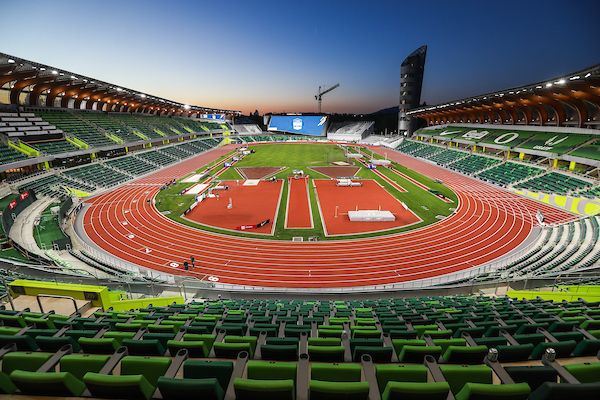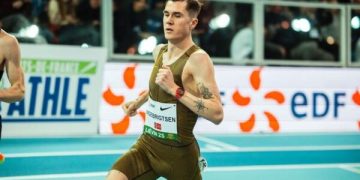This is Sam Fariss’s second piece on the US Champs in 2023 for RunBlogRun.
USATF Outdoor Championships Day 2: Going Beyond Hayward
RelatedPosts
By Sam Fariss
EUGENE – Hayward Field has held some of the largest track and field meet in United States history. Hayward Field is in a college town that has a population of just above 175,000 people. While Eugene and Tracktown, USA, might be safe havens for track fans, they’re certainly far from household names.
While major national and international meets bring track and field folks to Tracktown, it certainly has an impact beyond the stadium itself.
Annika Garrett is a recent graduate from the University of Oregon and has been in Eugene for the US champs this week as well as the World Athletic Championships, USATF Championships, and NCAA Championships in 2022.
“I feel like meets this size typically bring out a sense of community and enthusiasm here in Eugene,” Garrett said. “Everyone really leans into the idea of tracktown USA, and there’s a lot of city pride and support demonstrated.”
Nestled along the southern edge of UO’s campus, Hayward stands out. According to Travel Lane County, When temporary seating is installed for meets such as the USATF Championships, the stadium’s capacity skyrockets to around 30,000 seats.
“Because I still live so close to campus, the biggest impact I’ve noticed is increased traffic levels and congestion,” Garrett added.
Athletes, media, fans, and officials all flock to Eugene, which has expanded its available accommodations in recent years. The city has built new hotels and the university has added dorms to create space for meeting attendees.
Haley Cook is a current law student at UO and has family that lives near town as well. She has lived in Eugene for the past five years and has been near campus for many of the past seasons’ meets as well as USATFs this weekend.
“Hayward is across the street from the law school, so occasionally the traffic from these events would cause an issue for the law students either parking or just trying to walk to class,” Cook said. “When the events are taking place in the summer when students are mostly gone, and there is no need to be on campus, it makes having large numbers of people in town much less inconvenient.”
In the few intersections that Hayward runs along, there are just stop signs, no lights, which control traffic, and most streets around the stadium are at least temporarily or partially closed while larger events are taking place.
While not all Eugene residents are die-hard track and field fans, people like Cook can still appreciate the significance behind their town playing host to these meets.
“Even though I don’t keep up with track and field a ton, I can still appreciate the amount of history at Hayward Field and how amazing of a facility it is,” Cook said. “So I welcome these events and sometimes will even get a last-minute ticket to go watch!”
The original Hayward Field was torn down in 2018 to make way for the new facility, which racked up a building cost of $270 million, according to The Oregonian. Much of the cost was footed by Phil Knight, co-founder and chairman emeritus of Nike, who has donated more than $1 billion to the school in total.
Knight’s money was well spent as thousands of fans and athletes have passed through Hayward’s gates since construction was completed in 2021 in order to take in the colossal stadium.
Eugene itself has benefited from the increased tourism in the city. While Hayward has food and drink vendors as well as multiple merchandise stands, people love to explore the city and discover what Tracktown has to offer.
“I love Eugene, and so it is fun to see people exploring Eugene who probably would not have ever come here except for track events,” Cook said. “Also, Eugene has a lot of small businesses and restaurants that thrive when there are track and field events in town, so it is amazing for the whole community.”
The summer schedule is fairly light for Hayward Field, but it will host the annual Pre-Classic in September. The meet will be the final for the Diamond League season, the international, professional track and field circuit.
Author

Sam Fariss is a freelance journalist and a contributor for RunBlogRun. Sam writes a column called “Run By Women,” which gives a spotlight to female track and field athletes who are often overlooked. Sam is living in Austin, Texas, where she works full-time while also covering major running events, both in-person and remotely. Sam Fariss began writing for RunBlogRun in 2021.
View all posts






















